



In recent times we have often heard that we’re facing the end of the world as we know it because of factors such as potential nuclear wars, self-sufficient machines, international political crises, and global environmental disaster. However, people in every single age have believed they were heading towards the end of the world. The feeling of being trapped at the end of a road leading nowhere is crucial to understanding why we have needed to apply definitions such as “post-truth” and “alternative facts” to centuries-old rhetorical strategies – creating new terms for the last age of humankind as we know it.
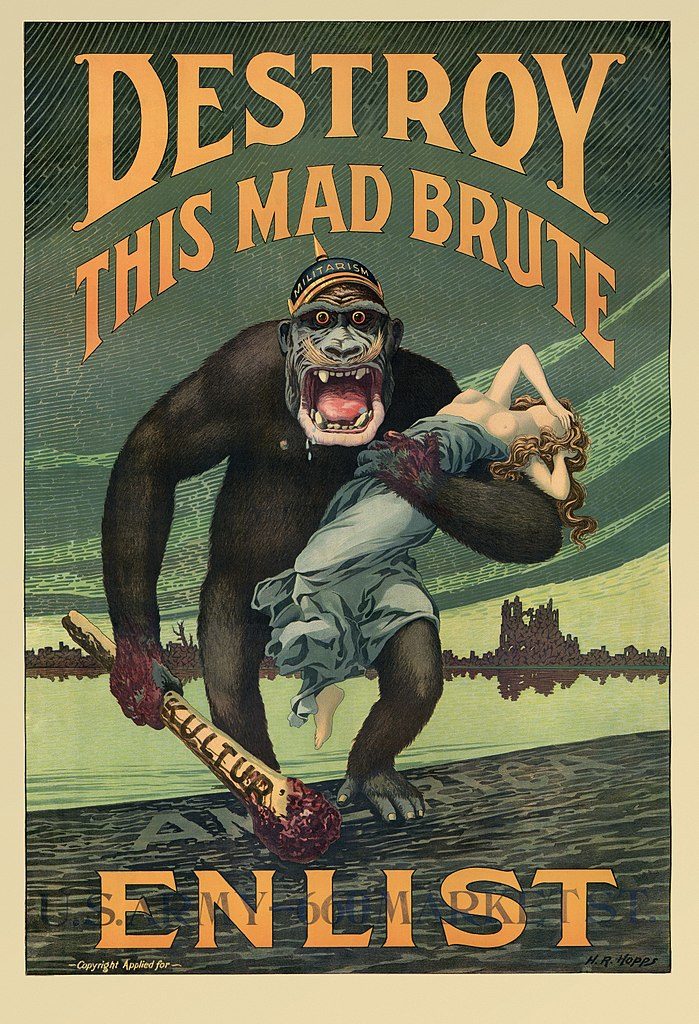
Whilst it may be true that propaganda has been strategically important in shaping opinions since King Darius, the nature of media – from cinematic newsreels created by 1910s national bureaus to today’s social media landscape – plays a crucial role in shaping how strategic messages are created and disseminated. Although we have shifted from the broadcast model of the 20th Century to a mode of prosumption, we are still dealing with the same questions: what effective power does language have? When does a message become propaganda? To what degree can individuals be defined as passive (or active) agents when they share officially approved information? Given these questions, it is no surprise that a number of contemporary artists working with the internet and digital cultures are responding to a perceived crisis of “truthiness” with strategies deriving from the 1910s activity of the Dadaists, a cultural elite who worked in Europe and the U.S. in war times.
Since the 1980s, early artists working with the internet claimed a connection between online art and Dada. It is now important to consider the reasons why, more than two decades later, new generations are still playing in the same field discovered by the Dadaists. The first Dada group was founded in 1915 in Zurich, one of the safest places in Europe, by artists and poets who could afford the journey and the stay. In such a city, anything could be said and written without caring too much about the actual consequences. Broadly speaking, this perceived freedom of expression is analogous to the promises of today’s social media, where everyone purportedly has the same right to share opinions and get involved in discussions as everyone else, without feeling obliged to be politically correct. A sense of detachment is among the features shared by the original Dadaists and contemporary artists with an interest in political questions. Often working in isolated environments, today’s artists use detachment as a strategy by distancing themselves from what’s happening behind the borders and commenting on the daily news, attending to how ‘facts’ have been narrated rather the ‘facts’ themselves.
Another important feature shared both by contemporary artists and the Dadaists is a focus on the ‘flatness’ of communication, which was adopted in strategies of advertising, propaganda and manifesti. This flatness arises since every sentence is an exclamation and the reader’s attention is diverted by unexpected changes and incessant slogans, making the message a discourse without hierarchies. This mechanism makes every part important and urgent, such that, no one part is actually necessary for the economy of the message.
A century ago, a political or artistic group couldn’t be defined as such if it didn’t publish at least a founding manifestoin a newspaper. To write a manifesto meant to impose a vision of the world, to claim the priority of some values in respect to other interpretations. Nowadays people rarely make manifesti, but a spectacular exception is Google’s list of guidelines for Material Design. These aim to spread the word about a “unified system that combines theory, resources, and tools for crafting digital experiences”, a mission recalling those stated by avant-garde and modernist groups to rebuild the world according to a unifying principle embracing all aspects of human beings. Artist Luca Leggero followed the guidelines provided by Google to make #MaterialArt (2017), colourful plastic art sculptures challenging the definitions of artwork and design pieces. Leggero critiques Google’s objective to reconstruct reality under its terms by putting into practice an accelerationist strategy; if everything must become part of the Google-branded world, why not art?
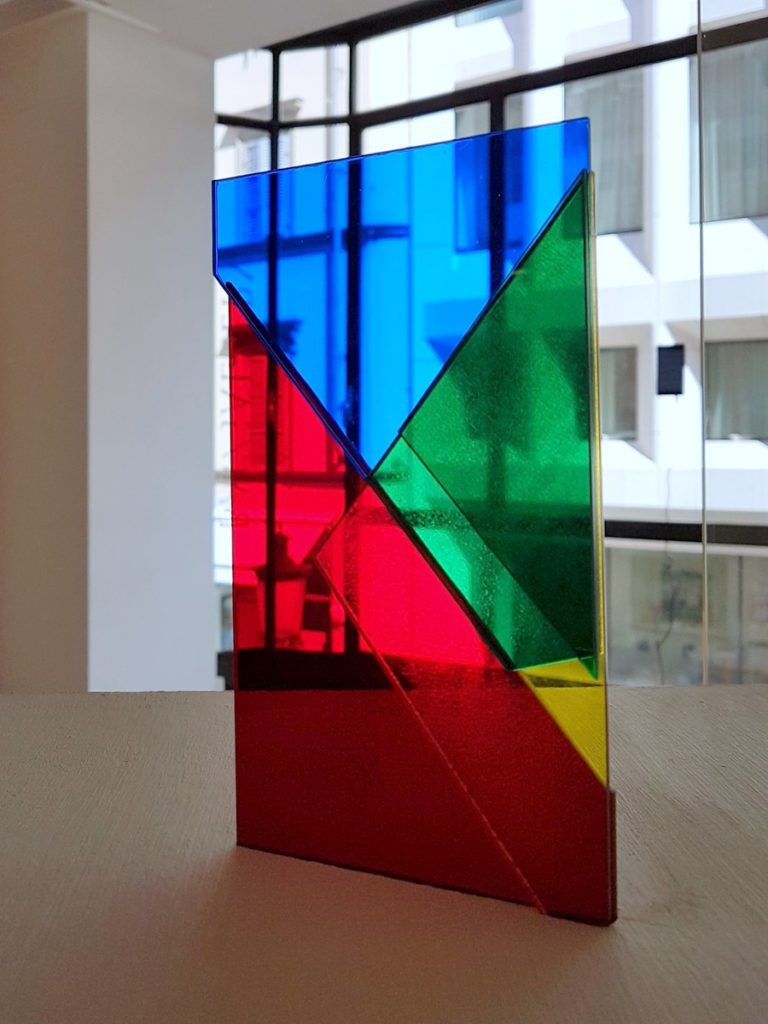
In the 1910s, groups published as many manifesti as possible in order to maintain interest among the public.4 To respond to their dogmatic and flat communication mode, however, Dadaists created countless statements that were not linked with each other whatsoever. For the Zurich group, the goal was to generate noise in the endless stream of commercial and political propaganda; it was a joyful activity that, with its randomness, confirmed the nonsense of all the other official communications. Today, the production of noise, and the disruption of corporate and political communication platforms is the aim of many artists’ practices, but only a few of them are so incisive as Ben Grosser’s. “ScareMail” (2013) is a web browser extension that originated in the midst of the 2013 NSA surveillance scandal. For every new email, it adds an algorithmically generated narrative comprising terms that would likely ring an alarm bell at the NSA.

Given the importance of ‘flat’ communicative hierarchies in Dada practice, it’s not surprising how many Dada artists studied the concepts of randomness and entropy as a way of making new realities. There is not just one reality, they seemed to claim, but too many to even imagine; there is not just one imposing point of view, but many – and these may not concur with each other. An exemplary case is a series of collages by Hans Arp arranged according to the Laws of Chance, which didn’t mean they were made without the exercise of any control, but that the artist arranged the pieces automatically, by will. An interest in automatism can be found in many contemporary artists using algorithms as artistic tools, such as Rafaël Rozendaal with Abstract Browsing (2014), a Chrome extension that turns any website into a colourful composition. HTML is a language and as such, it can be read by the browser in many ways, not only the one used by developers and designers. Rozendaal’s work shows the random potential innate in anything, while suggesting there are alternative ways to consume given contents.
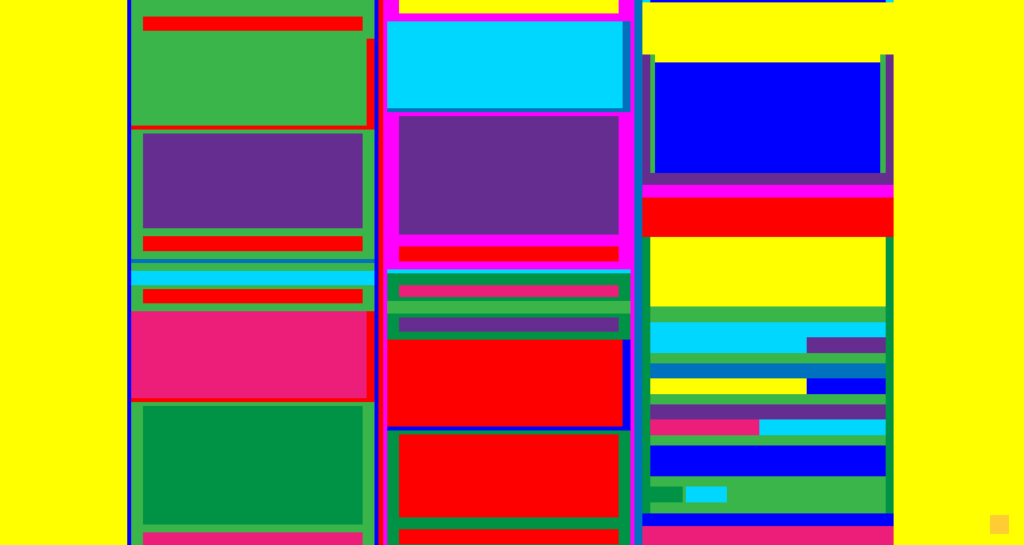
“Abstract Browsing” (2014), Rafaël Rozendaal
The production of noise seems to have been the most disruptive response to nationalist propaganda and corporate advertising produced by the original Dada groups. Most of these artists challenged the dogmatic, exclamatory tone used in the official language of war bulletins and newspaper adverts. Taking advantage of this tone and using it in chance-driven messages allowed them to reveal the absurdity of the dogmatic nature of propaganda and advertising.
Many contemporary artists are more or less consciously keeping alive these practices and producing their own kinds of noise in the face of fake news and alternative facts. Nowadays, not only do governments and advertising companies subtly practice dogmatic and exclamatory strategies, but it is even taken for granted they can and indeed do put into practice such disruptive ways to spread messages. When propaganda exploits guerilla strategies, and is generated in the same way art projects disrupt media environments, how should artists respond? This is one of the most challenging issues some artists want to address and the next few years will be a rich (and noisy) testing ground for many of them.
In “How Readers Will Discover Books In Future“, science fiction author Charles Stross envisions a future in which weaponized eBooks demand your attention by copying themselves onto your mobile devices, wiping out the competition, and locking up the user interface until you’ve read them.
This is only just science fiction. Even the earliest viruses often displayed messages and malware that denies access to your data until you pay to decrypt it already exist. ePub ebooks can execute arbitrary JavaScript, and PDF documents can execute arbitrary shell scripts. Compromised PDFs have been found in the wild. Stross’s weaponized ebooks are not more than one step ahead of this.
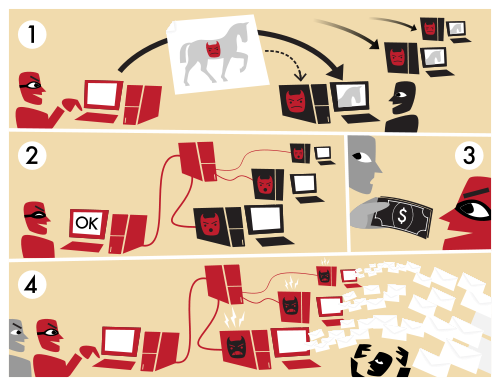
Why would eBooks want to act like that? To find readers. In the attention economy, the time required to read a book is a scarce resource. Most authors write because they want to be read and to find an audience. Stross’s proposal is just an extreme way of achieving this. In Stross’s scenario, authors are like the criminal gangs that use botnet malware to get your computer to pursue their ends rather than your own, use adware to coerce you into performing actions that you wouldn’t otherwise, or use phishing attacks to get scarce resources such as passwords or money from users.
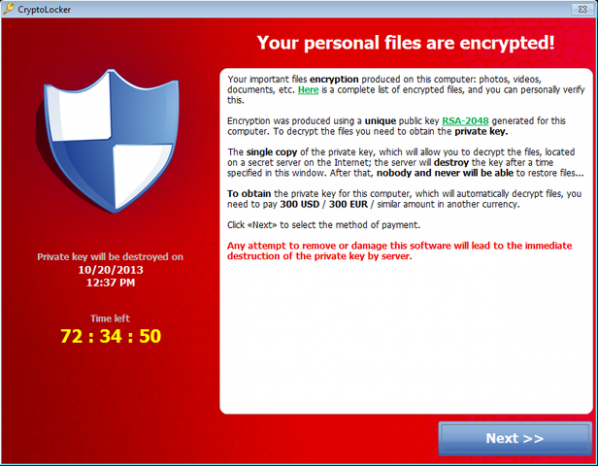
As so much new art is made that even omnivorous promotional blogs like Contemporary Art Daily cannot keep up, scarcity of attention becomes a problem for art as well as for literature. And when people do visit shows they spend more time reading the placards than looking at the art. In these circumstances Stross’s strategies make sense for art as well. Particularly for net art and software art.
A net or software artwork that acted like Stross’s vampire eBooks would copy itself onto your system and refuse to unlock it until you have had time to fully experience it or have clicked all the way through it. It could do this in web browsers or virtual worlds as a scripting attack, on mobile devices as a malicious app, or on desktop systems as a classical virus.
Unique physical art also needs viewers. Malicious software can promote art, taking the place of private view invitation cards. Starting with mere botnet spam that advertises private views, more advanced attacks can refuse to unlock your mobile device until you post a picture of yourself at the show on Facebook (identifying this using machine vision and image classification algorithms), check in to the show on FourSquare, or give it a five star review along with a write-up that indicates that you have actually seen it. In the gallery, compromised Google Glass headsets or mobile phone handsets can make sure the audience know which artwork wants to be looked at by blocking out others or painting large arrows over them pointing in the right direction.
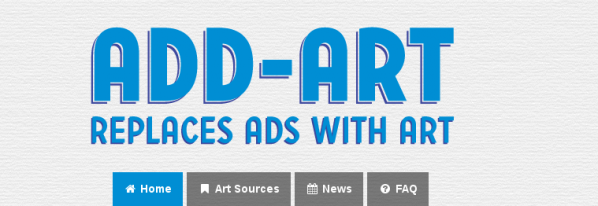
Net art can intrude more subtly into people’s experiences as aesthetic intervention agents. Adware can display art rather than commercials. Add-Art is a benevolent precursor to this. Email viruses and malicious browser extensions can intervene in the aesthetics of other media. They can turn text into Mezangelle, or glitch or otherwise transform images into a given style. In the early 1990s I wrote a PostScript virus that could (theoretically) copy itself onto printers and creatively corrupt vector art, but fortunately I didn’t have access to the Word BASIC manuals I needed to write a virus that would have deleted the word “postmodernism” from any documents it copied itself to.

Going further, network attacks themselves can be art. Art malware botnets can use properties of network topography and timing to construct artworks from the net and activity on it. There is a precursor to this in Etoy’s ToyWar (1999), or EDT’s “SWARM” (1998), a distributed denial of service (DDOS) attack presented as an artwork at Ars Electronica. My “sendvalues” (2011) is a network testing tool that could be misused, LOIC-style, to perform DDOS attacks that construct waves, shapes and bitmaps out of synchronized floods of network traffic. This kind of attack would attract and direct attention as art at Internet scale.

None of this would touch the art market directly. But a descendant of Caleb Larsen’s “A Tool To Deceive And Slaughter” (2012) that chooses a purchasor from known art dealers or returns itself to art auction houses then forces them to buy it using the techniques described above rather than offering itself for sale on eBay would be both a direct implementation of Stross’s ideas in the form of a unique physical artwork and something that would exist in direct relation to the artworld.

Using the art market itself rather than the Internet as the network to exploit makes for even more powerful art malware exploits. Aesthetic analytics of the kind practiced by Lev Manovich and already used to guide investment by Mutual Art can be combined with the techniques of stock market High Frequency Trading (HFT) to create new forms by intervening in and manipulating prices directly art sales and auctions. As with HFT, the activity of the software used to do this can create aesthetic forms within market activity itself, like those found by nanex. This can be used to build and destroy artistic reputations, to create aesthetic trends within the market, and to create art movements and canons. Saatchi automated. The aesthetics of this activity can then be sold back into the market as art in itself, creating further patterns.

The techniques suggested here are at the very least illegal and immoral, so it goes without saying that you shouldn’t attempt to implement any of them. But they are useful as unrealized artworks for guiding thought experiments. They are useful for reflecting on the challenges that art in and outside the artworld faces in the age of the attention-starved population of the pervasive Internet and of media and markets increasingly determined by algorithms. And they are a means of at least thinking through an ethic rather than just an aesthetic of market critique in digital art.
The text of this article is licenced under the Creative Commons BY-SA 4.0 Licence.